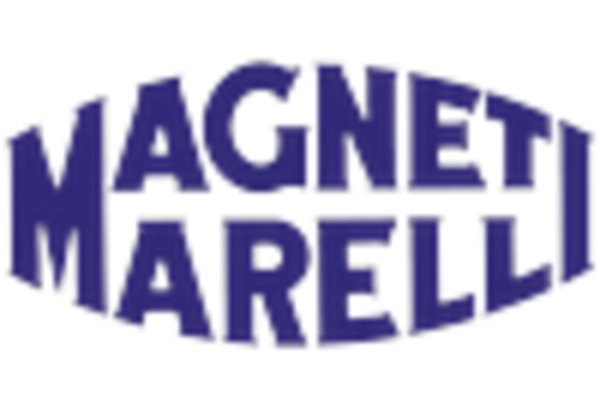Rising Demand for Fuel Efficiency
The automotive fuel-rail market experiences a notable surge in demand driven by the increasing consumer preference for fuel-efficient vehicles. As fuel prices fluctuate, consumers are more inclined to invest in vehicles that promise better mileage. This trend is further supported by regulatory measures aimed at reducing fuel consumption and emissions. In 2025, the average fuel economy of new light-duty vehicles in the US is projected to reach approximately 25 mpg, reflecting a 5% increase from previous years. Consequently, manufacturers are compelled to innovate and enhance fuel-rail systems to optimize performance and efficiency, thereby propelling growth in the automotive fuel-rail market.
Consumer Awareness and Preferences
Consumer awareness regarding fuel efficiency and environmental impact is a driving force in the automotive fuel-rail market. As information becomes more accessible, consumers are increasingly making informed choices about their vehicle purchases. Surveys indicate that over 70% of potential car buyers prioritize fuel economy when selecting a vehicle. This heightened awareness encourages manufacturers to focus on developing fuel-rail systems that enhance efficiency and reduce emissions. Consequently, the automotive fuel-rail market is likely to witness growth as companies respond to consumer preferences and invest in innovative solutions.
Government Regulations and Standards
Government regulations significantly influence the automotive fuel-rail market, as stringent emissions standards compel manufacturers to adopt cleaner technologies. The US Environmental Protection Agency (EPA) has set ambitious targets for reducing greenhouse gas emissions from vehicles, which necessitates the development of more efficient fuel-rail systems. By 2025, the EPA aims for a 30% reduction in emissions from new vehicles, prompting manufacturers to innovate and comply with these regulations. This regulatory landscape creates opportunities for growth in the automotive fuel-rail market, as companies invest in research and development to meet these evolving standards.
Growth of Electric and Hybrid Vehicles
The automotive fuel-rail market is also impacted by the increasing adoption of electric and hybrid vehicles. As consumers become more environmentally conscious, the demand for alternative fuel sources rises. Although electric vehicles (EVs) do not utilize traditional fuel-rail systems, the hybrid models still rely on advanced fuel delivery mechanisms. In 2025, it is projected that hybrid vehicles will account for approximately 15% of new vehicle sales in the US. This shift necessitates the adaptation of fuel-rail technologies to accommodate the unique requirements of hybrid systems, thereby influencing the automotive fuel-rail market.
Technological Advancements in Fuel Systems
Technological innovations play a pivotal role in shaping the automotive fuel-rail market. The introduction of advanced fuel injection systems, such as direct injection and multi-port fuel injection, enhances engine performance and efficiency. These systems are designed to deliver precise amounts of fuel, improving combustion and reducing emissions. In 2025, it is estimated that over 60% of new vehicles will incorporate advanced fuel systems, indicating a significant shift in consumer preferences. This technological evolution not only meets regulatory standards but also aligns with the growing demand for high-performance vehicles, thereby driving the automotive fuel-rail market.

















Leave a Comment